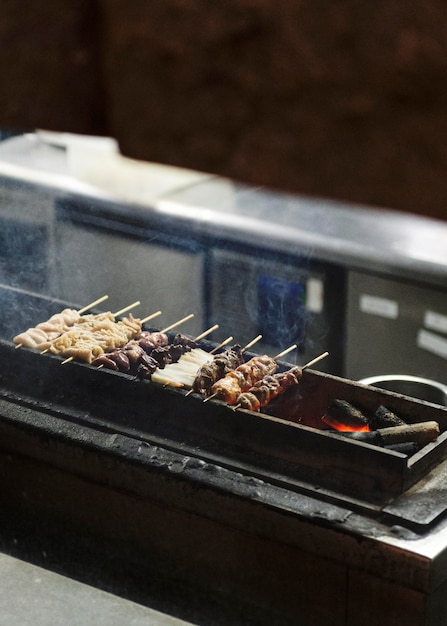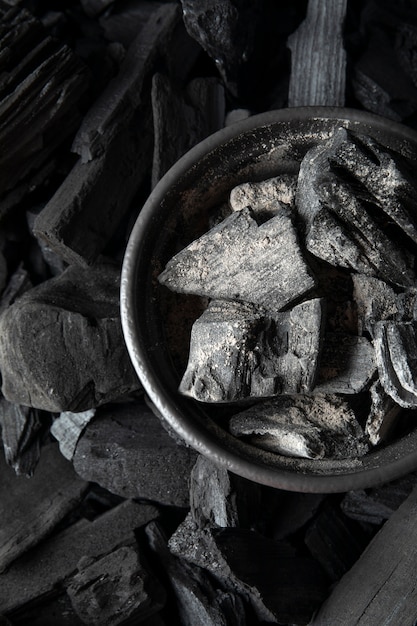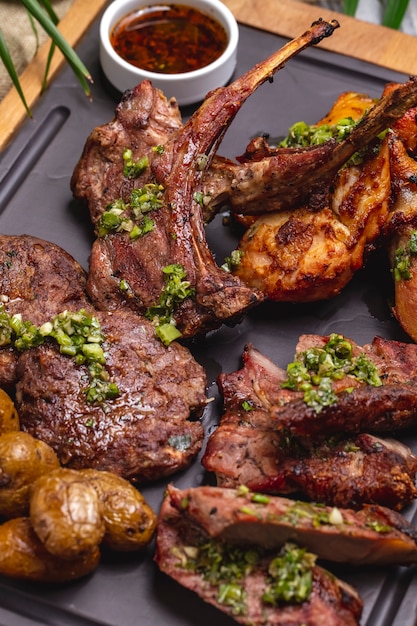How do you cook low and slow on a BBQ?
Cooking low and slow on a BBQ is a popular and delicious method of preparing meat that results in tender and flavorful dishes. This technique involves cooking the food at a lower temperature over a longer period of time, allowing the flavors to develop and the meat to become incredibly tender. Whether you’re a seasoned pitmaster or a beginner BBQ enthusiast, learning how to cook low and slow is a skill worth mastering.
The basics of low and slow cooking
To cook low and slow on a BBQ, you’ll need to create a controlled cooking environment with a consistent temperature. This can be achieved through indirect heat, which means placing the food away from the direct flames. By doing so, you can maintain a lower temperature inside the BBQ while still imparting a delicious smoky flavor to the meat.
One of the most important aspects of low and slow cooking is patience. The cooking process can take several hours, depending on the cut of meat and the desired level of doneness. It’s essential to plan ahead and allocate enough time for the food to cook slowly and evenly. This method is particularly suited for large cuts of meat, such as brisket, pulled pork, or ribs.
Preparing the meat
Before cooking low and slow on a BBQ, it’s crucial to properly prepare the meat to ensure maximum flavor and tenderness. Here are a few steps to follow:
- Trim any excess fat from the meat, leaving a thin layer to add flavor and moisture.
- Apply a dry rub or marinade to enhance the taste. Different spices and herbs can be used based on personal preference and the type of meat being cooked.
- Allow the meat to marinate for several hours or overnight in the refrigerator. This helps the flavors penetrate the meat and tenderize it.
The cooking process
When it comes to cooking low and slow on a BBQ, maintaining a consistent temperature is vital. Here are some key steps to follow:
- Preheat the BBQ to the desired temperature, typically between 225°F (107°C) and 275°F (135°C).
- Set up the grill for indirect heat by placing charcoal briquettes or wood chips on one side of the BBQ.
- Place a drip pan underneath the grill grates to catch any drippings and prevent flare-ups.
- Position the meat on the opposite side of the heat source, ensuring it’s not directly over the flames.
- Cover the BBQ with the lid and adjust the vents to maintain a steady temperature.
Throughout the cooking process, resist the temptation to constantly check on the meat. Opening the lid can cause temperature fluctuations and extend the cooking time. Instead, trust your thermometer and monitor the internal temperature of the meat to ensure it reaches the desired level of doneness.
Pro tip: Use a digital meat thermometer to accurately measure the internal temperature. For pulled pork or ribs, aim for a temperature of around 195°F (90°C), while brisket should reach an internal temperature of about 203°F (95°C) for optimal tenderness.
Resting and serving the meat
Once the meat has reached the desired temperature, remove it from the grill and let it rest for a short period. Resting allows the juices to redistribute, resulting in a more evenly flavored and tender end product.
After resting, it’s time to dig in! Low and slow cooked meats are often served with barbecue sauce on the side or used as the base for various dishes such as sandwiches or tacos. The possibilities are endless, and your taste buds are in for a treat.
In conclusion, cooking low and slow on a BBQ is a method that requires time, patience, and attention to detail. The results, however, are well worth it – tender, flavorful meat that will impress your friends and family. So fire up your grill, gather your ingredients, and enjoy the process of creating mouthwatering BBQ dishes that will have everyone asking for seconds!
What is the best beef for slow BBQ?
When it comes to slow BBQ, choosing the right cut of beef can make all the difference in flavor and tenderness.
Cuts of Beef for Slow BBQ:
1. Brisket: Brisket is considered the king of slow BBQ. It is a tough cut of meat that requires long, slow cooking to break down the connective tissues and become tender. When cooked low and slow, brisket develops a rich and smoky flavor.
2. Chuck Roast: Chuck roast is another excellent option for slow BBQ. It is a well-marbled cut that becomes incredibly tender when cooked slowly over low heat. Chuck roast is perfect for pulled beef sandwiches or delicious beef tacos.
3. Short Ribs: Short ribs are flavorful and ideal for slow BBQ. They have a good amount of marbling, which adds juiciness and richness to the meat. Slow cooking short ribs results in succulent and fall-off-the-bone tender beef.
How to Choose the Best Beef:
When selecting beef for slow BBQ, keep the following tips in mind:
- Look for well-marbled meat: Marbling refers to the fat running through the muscle, which adds flavor and moisture during the cooking process.
- Choose thicker cuts: Thicker cuts of beef are better suited for slow BBQ as they can withstand long cooking times without drying out.
- Consider the collagen content: Collagen is a type of connective tissue that breaks down during slow cooking, resulting in tender meat. Cuts with higher collagen content, such as brisket, are great choices.
The key to a successful slow BBQ is selecting the right cut of beef and giving it enough time to cook low and slow.” – BBQ Expert
By using the right cut of beef and practicing proper slow cooking techniques, you can achieve mouthwatering BBQ that will impress your friends and family. Enjoy experimenting with different cuts and flavors to find your favorite combination!
What is the low and slow cooking temperature for BBQ?
When it comes to barbecuing, one technique that has gained immense popularity is the low and slow cooking method. This involves cooking food slowly at a low temperature over a longer period of time, resulting in tender, flavorful meat that falls off the bone. But what exactly is the ideal low and slow cooking temperature?
The Ideal Temperature
The ideal low and slow cooking temperature for BBQ typically ranges between 225°F (107°C) and 275°F (135°C). This temperature range allows the meat to cook gradually and evenly, resulting in a juicy and succulent texture. Maintaining a consistent temperature throughout the cooking process is crucial to achieve the desired results.
Why Low and Slow?
Low and slow cooking is particularly popular for smoking meats like pork ribs, beef brisket, and pulled pork. The extended cooking time at lower temperatures breaks down the collagen in the meat, making it incredibly tender and flavorful. The smoky flavors from wood chips or chunks further enhance the taste.
“Low and slow cooking allows the flavors to develop slowly and creates a beautiful bark on the exterior of the meat.”
How to Achieve the Low and Slow Cooking Temperature
There are several methods to achieve and maintain the low and slow cooking temperature for BBQ:
- Use a barbecue smoker or grill with precise temperature controls.
- Indirect grilling method: Place the charcoal or heat source on one side of the grill and the food on the other side to ensure even heat distribution.
- Invest in a digital meat thermometer to monitor the internal temperature of the meat accurately.
- Use hardwood lump charcoal or wood chunks for a steady and consistent heat source.
Factors to Consider
While the recommended low and slow cooking temperature is generally between 225°F and 275°F, it is essential to consider the following factors:
- Different types of meat may require slightly different cooking temperatures and times.
- The size and thickness of the meat can affect cooking time. Thicker cuts may require longer cooking periods.
- External weather conditions can impact the cooking temperature and time. Wind and cold temperatures may require adjustments to maintain the desired heat.
By understanding and mastering the low and slow cooking technique, you can elevate your BBQ experience and impress your friends and family with perfectly cooked, melt-in-your-mouth meat.
How do you cook on a BBQ without burning it?
Barbecuing is a popular cooking method, especially during the summer months in the UK. However, getting the perfect barbecue can be challenging, as it’s all too easy to end up with burned or charred food. To help you avoid this common pitfall and achieve deliciously cooked meals, here are some tips on how to cook on a BBQ without burning it:
1. Choose the right temperature
One of the key factors in preventing burnt food on the barbecue is controlling the temperature. Start by preheating the grill and then adjust the heat according to the type of food you are cooking. For delicate items like fish or vegetables, use a lower temperature, while thicker cuts of meat can handle higher heat.
2. Oil the grill grates
Before placing any food on the grill, make sure to oil the grates properly. This will help prevent sticking and ensure that your food cooks evenly. Use an oil with a high smoke point, such as vegetable or canola oil, and apply it to the grates using a brush or paper towel.
3. Use indirect heat for larger items
If you’re cooking larger items like whole chickens or roasts, it’s best to use indirect heat. This means placing the food away from the direct flames or heat source. This method allows for more even cooking and reduces the risk of burning.
4. Monitor and flip regularly
Keep a close eye on the food while it’s on the grill and flip it regularly to ensure even cooking. Use long-handled tongs or spatulas to handle the food and avoid piercing it, as this can cause juices to escape and increase the risk of burning.
5. Use a meat thermometer
Invest in a good-quality meat thermometer to take the guesswork out of determining doneness. This will help you cook meats to the perfect internal temperature, reducing the risk of burning while ensuring food safety.
“Remember that barbecue is not a race – take your time and enjoy the process.”
By following these tips, you can achieve deliciously cooked barbecue meals without the risk of burning them. Remember that barbecue is not a race – take your time and enjoy the process. Happy grilling!
What Temperature is Beef BBQ Done?
When it comes to barbecuing beef, achieving the perfect doneness is crucial for a tender and juicy bite. Understanding the ideal internal temperatures for different cuts of beef will help you cook your barbecue to perfection every time.
Internal Temperatures for Beef Barbecue
Here are the recommended internal temperature ranges for various cuts of beef:
| Cut | Preferred Doneness | Internal Temperature |
|---|---|---|
| Steaks (e.g. Ribeye, Striploin) | Medium Rare | 135°F to 140°F (57°C to 60°C) |
| Steaks (e.g. Sirloin, T-Bone) | Medium | 145°F to 150°F (63°C to 66°C) |
| Roasts (e.g. Prime Rib, Brisket) | Medium Rare to Medium | 130°F to 145°F (54°C to 63°C) |
| Burgers and Ground Beef | Well Done | 160°F (71°C) or higher |
It’s important to note that these temperatures are just guidelines, and personal preferences may vary. Some individuals prefer their beef slightly more or less done than the recommended temperatures.
Why Internal Temperature Matters
The internal temperature of the beef is a reliable indicator of its doneness. Cooking meat to the appropriate temperature ensures that harmful bacteria, such as E. coli and Salmonella, are destroyed, making it safe to consume. Additionally, reaching the ideal internal temperature allows for proper breakdown of connective tissues, resulting in tender and flavorful meat.
Remember, always use a meat thermometer to accurately measure the internal temperature of your beef. This is the best way to ensure consistent and safe results.
By keeping these recommended temperatures in mind, you can confidently grill your beef to perfection, whether you’re hosting a summer barbecue or enjoying a relaxed weekend cookout. Happy grilling!



